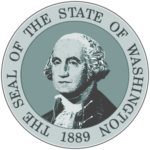Pillar overview
This pillar builds on the foundation of learning students have done in the previous three pillars, focusing on Creating a Healthy Learning Community, Understanding Culture and Identity, and Investigating Educational Equity and Opportunity (beyond the walls of the school). The equity pedagogy pillar moves fully into the classroom and school with questions of how to enact practices that are equitable and culturally sustaining that offer all students a quality education. Students will draw on knowledge of second language acquisition, learning and development, learning differences and special needs to explore differentiated instruction and the diverse strategies to support all students to learn. They will develop a holistic profile of their own learning strengths and challenges and will also complete a profile of a student. This pillar is best taught when students are involved in authentic work in classrooms.
Competencies
Students will…
- Apply concepts related to learner differences and development to understand and identify strategies to holistically support a student with whom they work.
- Apply ELL theory in practice using a variety of appropriate strategies to support academic and language development with ELL students.
- Identify and selectively apply the best practices for the inclusion of children and adolescents with special needs.
- Plan, teach and reflect on a lesson they created to develop a reading comprehension strategy in the context of a culturally relevant read aloud.
- Develop a lesson plan that incorporates multiple instructional strategies matched to students’ strengths and needs to differentiate instruction.
- Use a variety of informal assessments and strategies to inform observing, planning, assessing, teaching and collaborating in an educational setting.
Essential questions
- How can teachers create a classroom that is respectful and responsive and supports academic achievement for all students?
- What strategies and methods are effective in supporting not only academic development but also the capacity to think critically and act autonomously?
- How do we learn from our students, our practice and our colleagues?
- How can we affirm and sustain students’ identities, language, culture, and agency in the classroom?
Desired results
Students will be able to…
- Consider varied aspects of learner differences and development to understand an individual’s strengths, challenges and possible ways of supporting their learning and development
- Apply ELL theory in practice using a variety of appropriate strategies to support academic and language development with ELL students
- Identify and selectively apply the best practices for inclusion in the education of children and adolescents with special needs
- Use multiple instructional strategies to address individual student needs and differentiate instruction for a variety of learners
- Use a variety of informal assessments to inform planning and teaching
Students will understand that…
- Individuals are unique, although we embrace a variety of best practices and strategies, the effectiveness of any one strategy will vary depending on the person.
- There are a variety of traditions in educational psychology and the strategies and methods they will use are derived from specific perspectives on learning and development.
- Theories of development address emotional, social, academic, moral and cultural aspects of individuals, and equity pedagogy embraces a holistic view of learners.
- Learning occurs best when the classroom environment is supportive of holistic growth.
Students will know…
- Theories of learning and development, second language acquisition, differentiated instruction and the strategies associated with them
- The categories of different special education uses and the process students go through to be identified and receive services
- Practices associated with multicultural education and culturally relevant teaching
- Specific strategies to support struggling readers and / or math learners
Students will be skilled at…
- Understanding learners with multiple lenses of learning and development
- Applying different strategies to support students’ learning in one-on-one or small groups
- Planning, teaching and assessing simple lessons
- Building positive relationships with students

